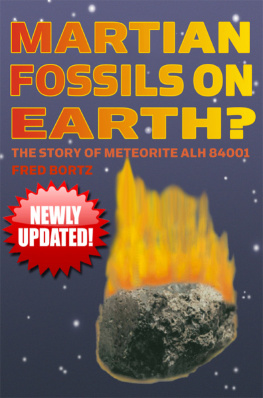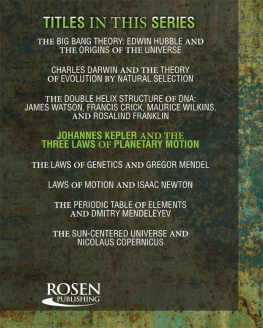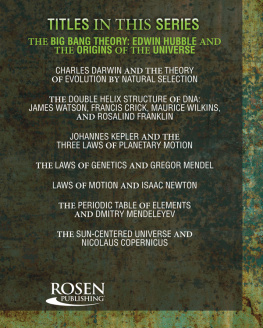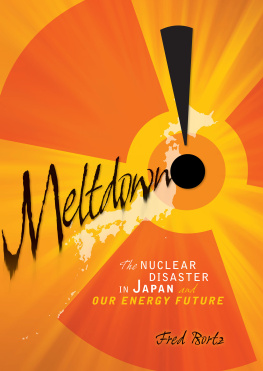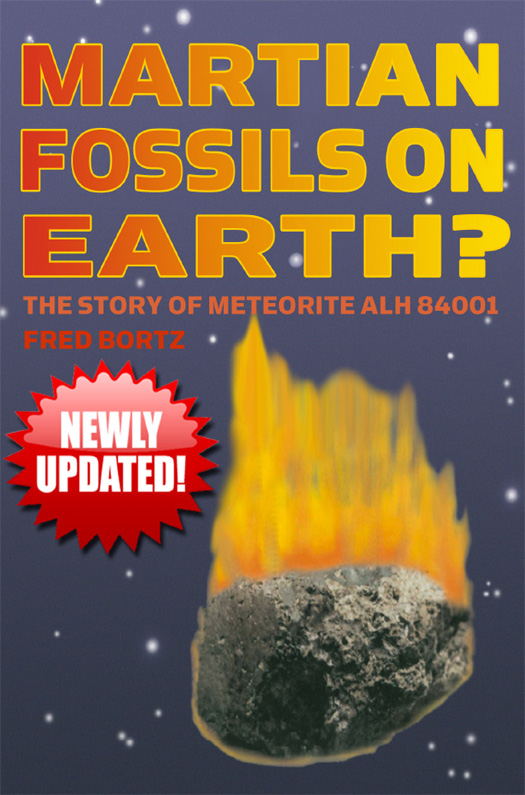For my grandchildren,
and all the discoveries that await them.
Photographs courtesy of: ANSMET: p. by Fred Bortz.
Copyright 2014, 1997 by Alfred B. Bortz. All rights reserved.
Published by StarWalk Kids Media
Except in the case of brief quotations embodied in critical reviews and articles, no part of this book may be used or reproduced in any manner whatsoever without written permission from the publisher. Contact: StarWalk Kids Media, 15 Cutter Mill Road, Suite 242, Great Neck, NY 11021
www.StarWalkKids.com
Print version originally published by The Millbrook Press, Inc.
ISBN 978-1-63083-171-4


CONTENTS
Guide
MARTIAN FOSSILS ON EARTH?


METEORITE ALH 84001
Because scientists love the excitement of discovery, they sometimes love the search for answers even more than the answers themselves. That is why they are so excited about a rock. Deep within this rock are structures and substances that will allow scientists to explore one of the most intriguing questions of all time: Is there life on other worlds?
T he rock is known as meteorite ALH 84001. It is about the size and shape of a potato and weighs 1.94 kilograms (about 4 pounds). A meteorite is a rock that fell to Earth from space.
Meteorite ALH 84001 landed in the Allan Hills area of Antarctica about 13,000 years ago. It was discovered in December 1984 by the scientists of the Antarctic Search for Meteorites (ANSMET) project, originally led by William A. Cassidy and now led by Ralph P. Harvey.
ANSMET scientists have found about more than 20,000 meteorites since the project began in 1976. After each meteorite-hunting season, the ANSMET scientists send their extraterrestrial rock collection to the Lyndon B. Johnson Space Center (JSC) in Houston, Texas. There, the meteorites are numbered and carefully cut into pieces, which are sent to scientists all over the world for study. ALH 84001 was the most interesting and unusual item in the Allan Hills 1984 1985 rock collection. The meteorites name means Allan Hills, 19841985 season, number 001.


Some meteorites come from wandering chunks of rock left over from the formation of Earth and other planets of the solar system. Other meteorites appear to be fragments of Moon-sized bodies that formed and then were broken apart. Like the planets, meteorites travel at very high speeds around the sun in paths called orbits. If a rocks orbit brings it near Earth, it may enter Earths atmosphere and collide with our planet.
Just as water slows your body when you dive into a swimming pool, the atmosphere slows the rock. Scientists call the force that slows your body, or the rock, friction. The friction transforms the rocks energy of motion into heat. The rock begins to melt, and the atmosphere begins to glow, forming a streak of light that crosses the sky. When we on Earth see the glow, we call it a meteor, or a shooting star (although it has nothing to do with stars).
Most meteors are small or are made of light materials. These burn up entirely when they enter the atmosphere, leaving only vapor and bits of dust. A few meteor-causing bodies are large and fall to the ground as meteorites.


H ow do scientists recognize a meteorite? First, the outside of a meteorite shows signs of its fiery trip through the atmosphere. It is often oddly shaped, and its surface is smooth or glassy. Second, the rock is out of place. It is made of minerals unlike the other rocks around it.
Sometimes the original meteorite is so huge that it leaves a visible crater on Earth. About 10,000 years ago, a large rock composed mainly of iron and nickel struck the ground about 50 kilometers (30 miles) east of the present-day city of Flagstaff, Arizona. It blasted out a huge hole, about 1 kilometer (more than half a mile) across. It is commonly called Meteor Crater, although its official name is the Barringer Meteorite Crater. Many nickel-iron meteorites have been collected from that site.
Scientists classify each meteorite as a member of a family, according to its physical appearance and mineral makeup. A meteorite family is often named after the location where the first such meteorite is found.


ALH 84001 is a shergottite meteorite. The first known shergottite meteorite fell in Shergotty, India, on August 25, 1865. ANSMET scientists have since found many more shergottite meteorites, including the small, black, crusty one pictured here, designated QUE 94201. It was found in the Queen Alexandra Range during the Antarctic summer of 19941995.
A meteorite that fell and killed an unfortunate dog in Nakhla, Egypt, on June 28, 1911, was the first to be classified as nakhlite. Another fell in Chassigny, France, on October 3, 1815, and was designated chassignite. Later, other nakhlite meteorites were found in Lafayette, Indiana, in 1931, and in Governador Valadares, Brazil, in 1958. Together, the shergottite, nakhlite, and chassignite meteorites are known as SNC meteorites.
Meteorite ALH 84001 was first identified incorrectly as a rare form of another mineral familythe diogenites. In 1993, meteoriticist (meteorite scientist) David Mittlefehldt caught the error. He announced that meteorite ALH 84001 was the tenth known member of the SNC class. Scientists now know of well over 100 SNC meteorites. Those rare rocks are very special indeed, for scientists now believe that the SNC meteorites are pieces of the planet Mars.
On August 7, 1996, meteorite ALH 84001 became the most famous rock on Earth. That day, a team of scientists led by David S. McKay of JSC made an astounding announcement. They believed that meteorite ALH 84001 contained chemical evidence and fossils of ancient Martian microbes. Life may have begun on Mars at about the same time as on Earth!
Who would want to live for months in Antarctica, where it snows even in the summertime? Thousands of scientists from around the world, thats who! Among them are the researchers of the Antarctic Search for Meteorites (ANSMET) project. Although meteorites are no more likely to fall on Antarctica than on other places, they are much easier to find there. And the meteorites found in Antarctica are in better condition.

